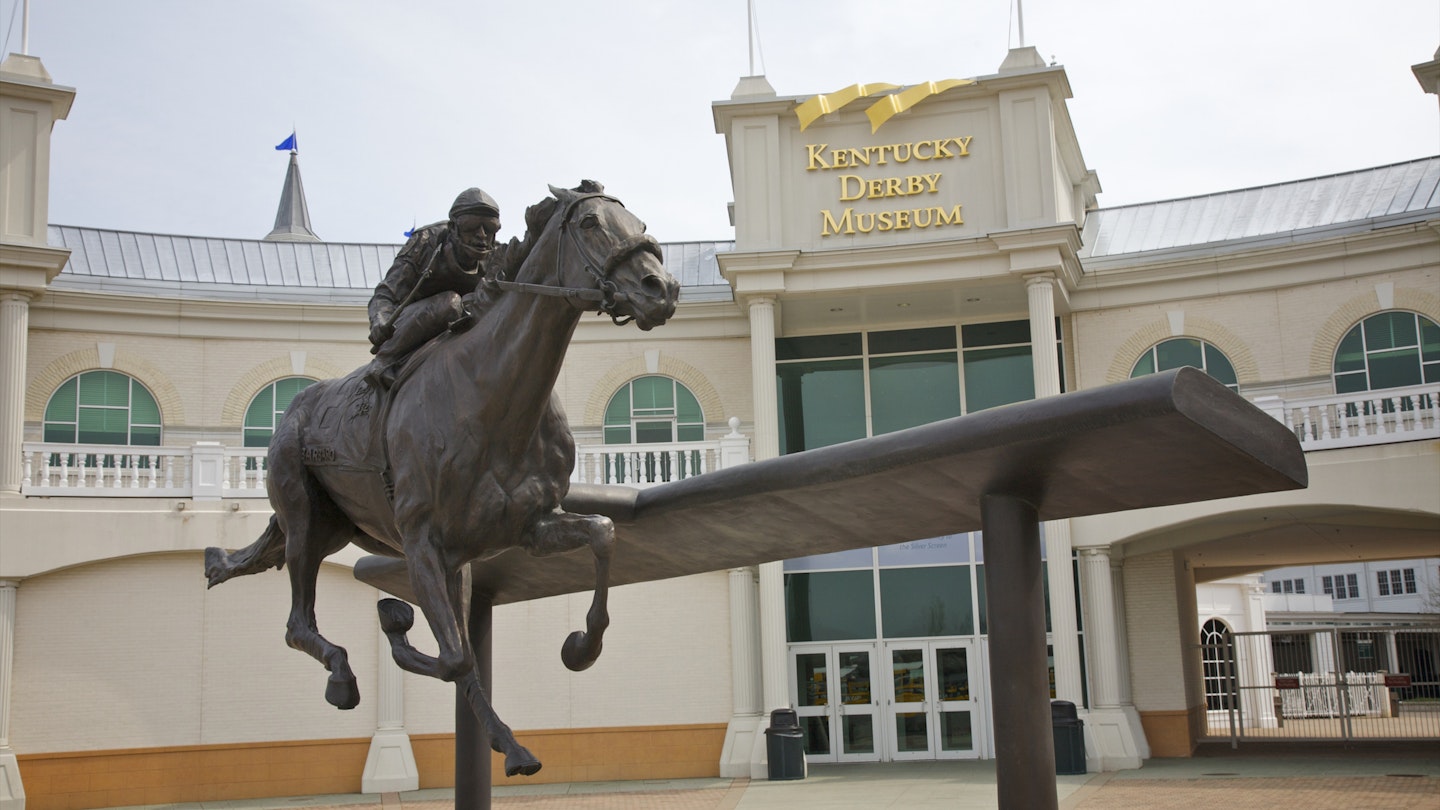Louisville’s coolest museums are one-of-a-kind places that tell the city’s story. Want to know about bourbon making? Horse racing? Baseball bats? The world’s greatest boxer? Louisville has it covered.
Several are located downtown on Museum Row, aka Main Street, within easy walking distance of each other. Note: many are closed on Sunday, Monday and/or Tuesday. Here are the city’s 10 best museums.
Muhammad Ali Center: Best for a Jab of Inspiration
A love offering to Louisville from its most famous native, the Muhammad Ali Center captures the complexity of the namesake boxer and civil rights champion. Videos of his famous fights and street poetry dazzle, as do interactive exhibits where you shadow box with Ali and practice jabs on a punching bag. However, what impresses most are exhibits showing how he used his athletic greatness as a catalyst to do amazing things in the social justice realm. The center challenges visitors to do the same.

Louisville Slugger Museum & Factory: Best for Baseball Fans
The Slugger Museum & Factory is a blast. It’s equally fun for adults and kids, and for hardcore baseball fans (and even not-so-hardcore ones). The factory has been cranking out the game’s most famous bat since 1884, a process you’ll see in action on the tour. Consequently, the museum showcases relics like Babe Ruth’s 1927 record-setting bat, complete with notches for every home run carved by the Bambino himself. Other exhibits let you hold and swing real bats used by Derek Jeter, David Ortiz, and other popular players.
Kentucky Derby Museum: Best for Horse Lovers
If you can’t attend the Kentucky Derby – the longest-running continuous sporting event in North America – then the Derby Museum should be your backup plan. Learn about the life of jockeys and gape at the flamboyant hat collection. Watch the 360-degree HD film that lets you feel the horses thundering by as if you were sitting trackside. Moreover, the real highlight here is the 30-minute walking tour (included with admission) that visits the track.
KMAC Museum: Best for Modern Art
Once known as the Kentucky Museum of Art and Craft, this small, sleek gallery rebranded as KMAC and expanded its mission to go well beyond the craft scene. Themed exhibitions change around every six months, so you never know exactly what you’ll see; however, expect works by contemporary artists using textiles, painting, photography, glassmaking, and film, among other mediums. Local artists often grab the spotlight. The museum shop wins points for its artsy gifts.

Speed Art Museum: Best for Art Through the Ages
The Speed Art Museum beautifully mixes classic and contemporary. The Grand Atrium is walled with fritted glass, and the striking stacked concrete exterior highlight the architecture, while Rembrandt’s Portrait of a 40-Year-Old Woman and works by Monet, Picasso, and John Singer Sargent star on the walls. Therefore, the big, open, warmly-lit rooms make for a serene viewing experience, perfect for an afternoon escape from the daily hullabaloo.
Kentucky Science Center: Best for Children
Kids get stoked for the Science Center’s three floors of clanging, splashing, hands-on exhibits. They gawk at the giant stuffed polar bear and an Egyptian mummy. They immerse in the giant bubble maker. Moreover, they go spelunking in the faux cave. Older kids solder glass and build circuit boards in the MakerPlace, while younger ones play with shapes in the Noodle Forest. Some folks still call the center by its old name: the Louisville Museum of Natural History.

Frazier History Museum: Best for Bourbon History
The whiz-bang Frazier History Museum showcases loads of unique artifacts, including Teddy Roosevelt’s “Big Stick” (a royal-grade double rifle), Geronimo’s bow and arrows, and a whopping collection of toy soldiers. Even more impressive is the Spirit of Kentucky bourbon gallery, where you make your own bourbon barrel (well, a model of one) and salivate in the Bottle Hall that displays all 500 bourbon brands produced locally. Furthermore, the Bourbon Trail Welcome Center, with maps and distillery information, is on the museum’s ground floor.
Roots 101 African American Museum: Best for African American History
Named one of the nation’s best new attractions by USA Today, the Roots 101 Museum opened its doors downtown in 2021. Art and artifacts related to the African American experience from the era of the Atlantic trade of enslaved people to modern times fill the compact warehouse. A wander through reveals displays of ancient West African sculptures, blues and jazz music icons, and the protests sparked by the killing of local Breonna Taylor. Issues of identity and social justice are explored throughout.
Thomas Edison House: Best for Creative Thinkers
Before Thomas Edison invented the light bulb, phonograph, and 1000 other things for which he held patents, he lived in Louisville and worked as a telegraph key operator. Consequently, during this time, between 1866 and 1867, he stayed in a tiny brick house in the Butchertown neighborhood. Volunteer docents take you on a deep dive through the humble space and tell all kinds of tales about the 19-year-old innovator. Displays show off his motion picture prototypes and other designs.

21c Museum Hotel: Best Freebie
This downtown boutique hotel doubles as a contemporary art gallery in its public spaces. Feel free to walk in any time to browse the current exhibitions. The art here is not a gimmick, as curators put together thought-provoking shows that use paintings, photographs, and sculptures to cover pressing topics like how time has been warped by pandemic isolation and how identity, migration, and memory intersect. Furthermore, exhibitions change frequently, so fresh eye candy is always available.





